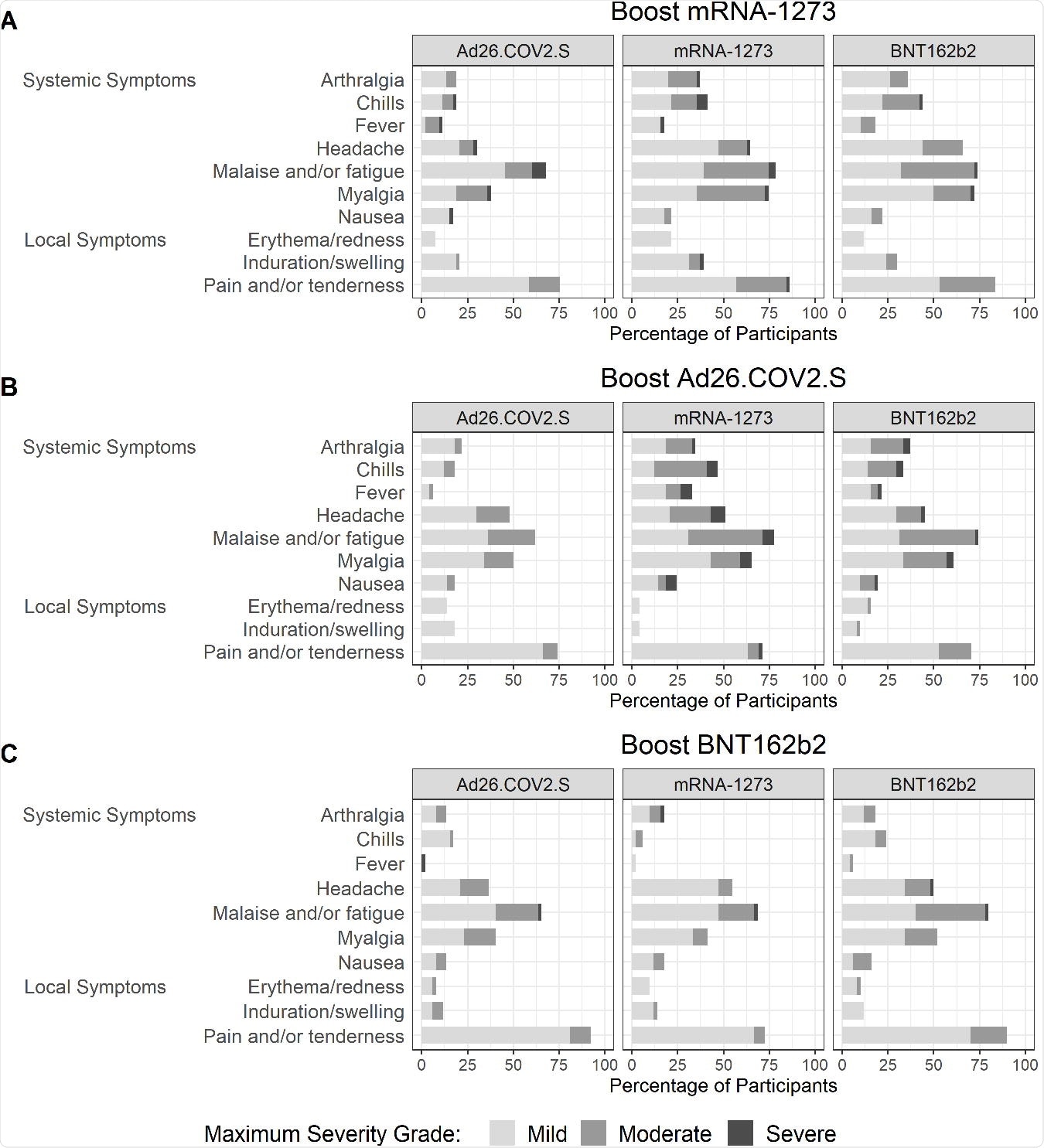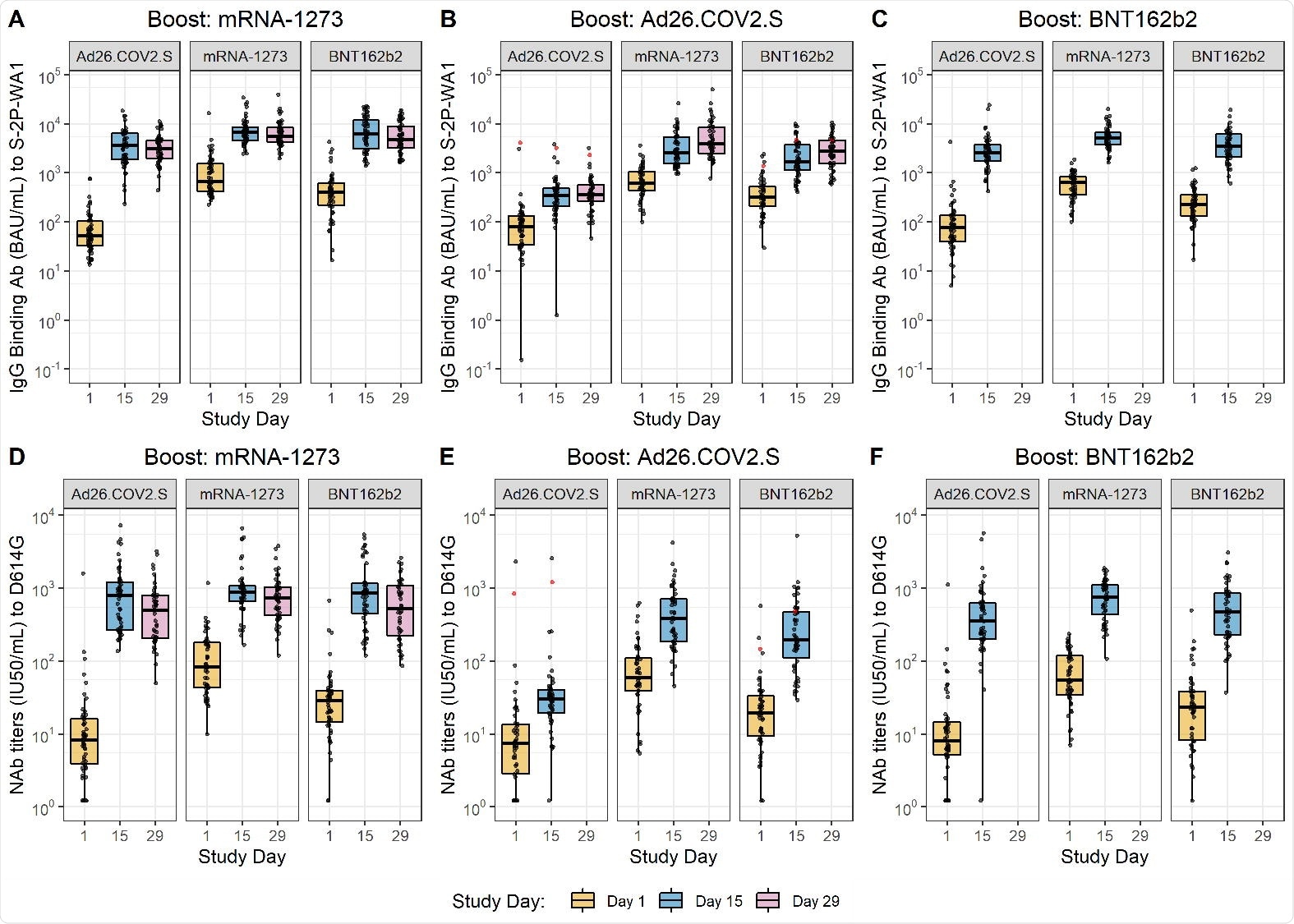Should you get a second dose of the same vaccine if you’ve received the one-dose Johnson & Johnson shot? According to new clinical trial results published on the preprint medRxiv* server, a booster shot of a messenger RNA (mRNA) vaccine may increase your chances of neutralizing severe acute respiratory syndrome coronavirus 2 (SARS-CoV-2).
Recent coronavirus research has suggested vaccine immunity wanes after several months. Thus, booster shots are a viable solution to ramp up antibody response. In addition, the current study finds that a mix-and-match booster regimen is relatively safe and effective in producing immunity against SARS-CoV-2 and other variants of concern.
Clinical trial information
A total of 458 people volunteered in the study. They were divided into two age groups: 18 to 55 years old and people over 56. Eligible participants received a booster shot with 1 of 9 different vaccine combinations from the Moderna, Johnson & Johnson, or Pfizer-BioNTech vaccines. In addition, trial investigators monitored participants 30 minutes after vaccination to observe for any severe adverse events.
The time between vaccination and a booster was shortest among participants who received a Moderna shot.
To measure immunity, participants’ blood was collected before vaccination, 15 days after vaccination, and 29 days following vaccination. SARS-CoV-2 neutralization titers were measured before and after immunization to detect 50% and 80% neutralization against SARS-CoV-2 variants.
Two participants showed immunological evidence of prior SARS-CoV-2 infection but were still included in the study. Another addition was a participant who developed COVID-19 infection 27 days after vaccination.
A memory aid was given to every participant to document local and systemic adverse events a week after vaccination.
Any unsolicited adverse events 28 days after vaccination and serious adverse events or new chronic medical conditions 12 months after vaccination were reported to the researchers.
Safety profile from each booster shot
A day after vaccination, one participant who received a Johnson & Johnson booster shot reported severe vomiting that required a medical visit a day after vaccination.
About 15.6% of participants who had a Moderna booster, 12% who had a Johnson & Johnson booster, and 14.3% who had a Pfizer-BioNTech booster reported unsolicited adverse events related to vaccination. Most were of grade 2 severity.
Four grade 3 adverse events were documented. A participant with the Moderna booster reported vomiting, and three participants with the Johnson & Johnson vaccine reported vomiting, fatigue, and insomnia.

The most common side effects occurred at the injection site. More than 71% of participants in each booster arm reported mild local pain or tenderness. Only two cases (one with the Moderna booster and one with Johnson & Johnson) had severe reactions at the injection site.
Other common vaccine side-effects included malaise, muscle pain, and headaches.
Local and systemic adverse events most likely happened 1 to 3 days after vaccination.
mRNA boosters showed higher SARS-CoV-2 binding antibody levels than people given a J&J booster
Everyone had detectable antibody levels before vaccination except for one person with a Johnson & Johnson booster. Following booster vaccination, every participant showed an increase in binding antibody levels.
“A 2-fold or greater rise in bAb was noted in 98-100% of Ad26.COV2.S recipients, 96-100% of mRNA-1273 recipients and 98-100% of BNT162b2 recipients following mRNA booster dosing,” explained the researchers.
People whose initial vaccination was Johnson & Johnson and who later received an mRNA booster showed high binding antibody titers levels 15 days after vaccination.
However, people with an initial mRNA vaccination and a Johnson & Johnson booster had 7- to 10-fold lower antibody levels compared to people who received an mRNA booster.
Against the WA-1 SARS-CoV-2 strain, binding antibody levels in people who received a Johnson & Johnson booster were 3- to 15-fold lower than people who received either mRNA booster.
Irrespective of age, booster shots caused detectable binding antibody levels against the Delta variant.

Neutralization response is greatest with mRNA booster shots
Before boosters, people with Pfizer-BioNTech showed three-fold lower neutralizing antibody levels compared to people with Moderna. Additionally, neutralizing antibody levels in people with Johnson & Johnson were 10-fold lower than people given Moderna.
People with an mRNA booster showed a four-fold increase in neutralization response than people who received a Johnson & Johnson booster.
The researchers note that at the time of the study neutralization response against the Delta and Beta variants was only available in people given a Moderna booster.
Initial results showed low neutralization levels against both variants before the booster. Except for 6 participants, every participant showed a four-fold or more significant increase in neutralization titers against Delta and Beta.
*Important Notice
medRxiv publishes preliminary scientific reports that are not peer-reviewed and, therefore, should not be regarded as conclusive, guide clinical practice/health-related behavior, or treated as established information.
- Atmar RL, et al. (2021). Heterologous SARS-CoV-2 Booster Vaccinations – Preliminary Report. medRxiv. Doi: https://doi.org/10.1101/2021.10.10.21264827, https://www.medrxiv.org/content/10.1101/2021.10.10.21264827v2
Posted in: Child Health News | Men's Health News | Medical Research News | Women's Health News | Disease/Infection News
Tags: Antibody, Blood, Chronic, Clinical Trial, Coronavirus, Coronavirus Disease COVID-19, Fatigue, immunity, Immunization, Insomnia, Muscle, Pain, Research, Respiratory, RNA, SARS, SARS-CoV-2, Severe Acute Respiratory, Severe Acute Respiratory Syndrome, Syndrome, Vaccine, Vomiting

Written by
Jocelyn Solis-Moreira
Jocelyn Solis-Moreira graduated with a Bachelor's in Integrative Neuroscience, where she then pursued graduate research looking at the long-term effects of adolescent binge drinking on the brain's neurochemistry in adulthood.
Source: Read Full Article